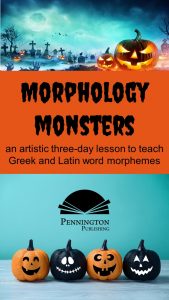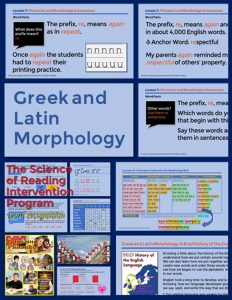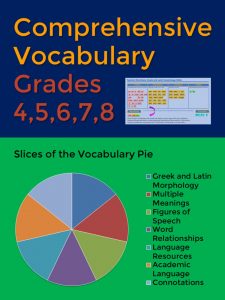“Aargh! I can’t make sense of what this author is saying. Her vocabulary is out of control! To understand this, I’d have to look up every other word in the dictionary. Do you follow what she’s saying?”
Αυτά μου φαίνονται Ελληνικά”
“So what does that mean?”
“It means, ‘It’s all Greek to me’ in Greek.”
We’ve used that expression in English for centuries to describe something we hear or read that we don’t understand. Even Shakespeare referenced the saying in Act 1 Scene 2 of his Tragedy of Julius Caesar.
Of course, the Greeks would never say “It’s all Greek to me.” After all, it is their language. But they do use a similar figure of speech. A Greek would say, “Αυτά μου φαίνονται κινέζικα,” or “This seems Chinese to me.”
When you sit down to read an article, a technical document, or a book, does the language the author uses seem “All Greek (or Latin) to you”? If so, you’re not alone, and you’re not illiterate. Often, reading English text does seem like reading a foreign language. And this makes perfect sense, because so much of English does derive from other languages.

Why Study Greek and Latin
Why Should We Study Greek and Latin?
Before I answer this question, let me answer a few challenges to my argument.
Challenge: Aren’t both Latin and Classical Greek dead languages? Latin is not spoken or written language today. Additionally, the Greek that you suggest we learn is also somewhat of a dead language in that the classic Greek which English borrows from is not the same as the modern Greek written and spoken today.
Answer: Both Latin and Classical Greek remain alive today in the sense of their relevance and connection to vocabulary, grammar, and literature.
Challenge: Why waste time studying Greek and Latin when we could be memorizing more English words?
Answer: Those wishing to improve their vocabularies don’t have to enroll in a Rosetta Stone course on conversational Greek or taking a two-year online course on Latin. Learning high frequency and high utility Greek and Latin word parts is the most efficient way to quickly increase one’s advanced English vocabulary. Plus, you already know quite a lot of the meanings of these word parts through a lifetime of listening and reading experience. Building on a foundation is so much easier than starting from scratch.
Challenge: I’ve heard that the Greek and Latin word parts aren’t reliable clues to meaning. What meant one thing 2,000 years ago does not always mean the same to us in the Twenty-First Century.
Answer: You are correct that some Greek and Latin word parts can lead you astray. Not every Greek and Latin word part meaning is a reliable clue to meaning. Some word parts have multiple-meanings. For example, in can serve as a positive prefix, meaning in or into, as in inviting or invaluable. However, in can also serve as a negative prefix, meaning not as in invisible or incoherent. In other cases, a Greek word part which sounds and is spelled exactly like a Latin word part will mean something quite different. Additionally, besides their denotative (or dictionary) meanings, Greek and Latin word parts have their nuances and connotations.
But these drawbacks are the same for every language, including English. Understanding what authors mean in their word choices is sometimes as much art as it is science. Good reading comprehension always involves problem-solving. The bottom line is that learning the high frequency and high efficiency Greek and Latin word parts will make a significant improvement in your vocabulary.
Now that I’ve addressed some of the common complaints and reservations about studying Greek and Latin to improve one’s English vocabulary, let’s provide the justification for Why Should We Study Greek and Latin?
1. Sheer Numbers
Greek and Latin have added more affixes (prefixes and suffixes) and roots than all other languages combined. In fact, over 50% of the words in college level English dictionaries have a least one Greek or Latin prefix, root, or suffix. If half of our 800,000-word lexicon, in other words, our total English vocabulary is Greek or Latin-based, it certainly makes sense to pay some attention to these languages.
2. Accuracy and Reliability
Because both ancient Greek and Latin are so well-preserved in literature, the meanings of most words and word parts remain remarkably consistent as they are used as part of the English language. Even the spellings of these prefixes, roots, and suffixes are consistent and predictable (Rasinski & Padak, 2001; Bear, Invernizzi, Templeton & Johnston, 2000).
3. Applicability
According to one study, “Knowing Greek and Latin word parts helps students recognize and gain clues to understanding of other words that use known affixes and roots” (Nagy & Scott, 2000).
In this same study, the authors found that learning Greek and Latin roots gives students the ability to learn many new words independently by helping them make connections among words and word families that are semantically related (Nagy & Scott, 2000).
4. Efficiency
“One Latin or Greek root or affix (word pattern) aids understanding (as well as decoding and encoding) of 20 or more English words” (Nagy & Scott, 2000).
High frequency Greek and Latin prefixes, suffixes, and roots provide useful short-cuts to enhancing one’s speaking and reading vocabulary in English. For example, knowing the word parts in just 15 words will unlock clues to meaning for thousands of words. The list is in your FREE download at the end of this article.
Knowing even one Greek or Latin word part in an unknown word can help a reader problem-solve not only the word in which it appears, but also other words in the same sentence.
For example, if you know that contra means against, you can probably guess what contradictory means and what yontuke means in this sentence:
The defendant provided contradictory testimony in which he first claimed that his stolen painting was worth a fortune, but later referred to that same painting as a yontuke copy.
Yes, yontuke means cheap; I know, because I made up the word. But you know its meaning, too, because knowing the meaning of the one word part, contra, not only helped you understand the meaning of contradictory, but also clued you into the meaning of another unknown word in the sentence, yontuke. Knowing some Greek and Latin word parts can make all the difference in improving your reading comprehension.
5. Cultural Impact
Another reason why we should study Greek and Latin is because of their cultural influence. The impact of Greek and Roman philosophy, literature, and science on Western Civilization has been profound. Language is part of culture. We can’t divorce our words from our culture.
For example, to understand these words: bees knees, speakeasy, and flappers we would have to know a bit about the Roaring 20’s Jazz Age. To understand dope, homies, and skrrt, we would have to know a bit about hip hop culture. To understand this dialogue, you’d have to know a bit about the cultural language patterns of Jeff Foxworthy’s Rednecks:
If’n y’all don’t stop fat’n I’m comin’ down there to school you young’uns.
Dun’t need no hep. Pap dun got hisself a gubmint job.
Well I’ll be a monkey’s uncle! He getn’ too big for his own britches.
Ah, I ain’t unnerstand nuthin’ you sed…must be some farn talk. I best skedaddle.
(Adapted from YourDictionary definitions and usage example. Copyright © 2018 by LoveToKnow Corp)
6. Studying Greek and Latin Makes You Smarter
Take any college-admission test preparation class for the SAT, ACT, LSAT, MedCaT, etc. and the instructor will stress the memorization of Greek and Latin word parts. IQ tests are rarely administered these days, but they are largely divided into language and reasoning. You guessed it… the language consists of academic words. And Greek and Latin are the primary source of academic language.
The research-based Academic Word List is chiefly based upon Greek and Latin word parts. This list of generalizable Tier 2 words is not domain or content-specific. These words appear most frequently in challenging text, including textbooks, articles, bucket list novels, and technical documents. The authors of the Common Core State Standards recommend studying these Tier 2 words. Studying a bit of Greek and Latin will give you access to the world of ideas and enhance both your reading comprehension. Additionally, the words you speak will gain the precision of meaning necessary for academic discussion.
Wouldn’t it be great to have the Greek and Latin instructional resources to learn and teach these vocabulary short-cuts?

Common Core Vocabulary Toolkits
Pennington Publishing’s Grades 4, 5, 6, 7, and 8 Common Core Vocabulary Toolkits include 56 worksheets, along with vocabulary study guides, and biweekly unit tests to help your students collaboratively practice and master these Common Core Standards:
-
- Multiple Meaning Words and Context Clues (L.4.a.)
- Greek and Latin Word Parts (L.4.a.)
- Language Resources (L.4.c.d.)
- Figures of Speech (L.5.a.)
- Word Relationships (L.5.b.)
- Connotations (L.5.c.)
- Academic Language Words (L.6.0)
Years ago I created a list of 15 Power Words with these types of associations for the most common Greek and Latin affixes and roots. The word parts associated in this list comprise word parts found in over 15,000 words. Well worth teaching your students, I would say.
Get the 15 Power Words FREE Resource:

My Grades 4−8 Common Core Vocabulary Toolkits pair prefixes, roots, and suffixes to maximize learning. Each grade-level curriculum includes some great interactive games. Enter discount code 3716 and get 10% off your purchase price.
Literacy Centers, Reading, Spelling/Vocabulary, Study Skills, Writing
Academic Word List, ACT, Common Core Vocabulary Toolkit, English vocabulary, Greek and Latin word parts, high frequency greek and latin, LSAT, Mark Pennington, MedCat, SAT, test preparation, Tier 2 words





